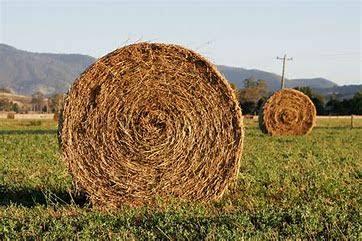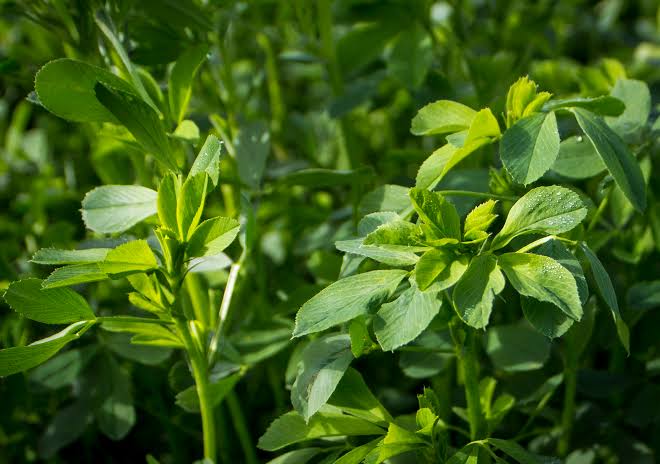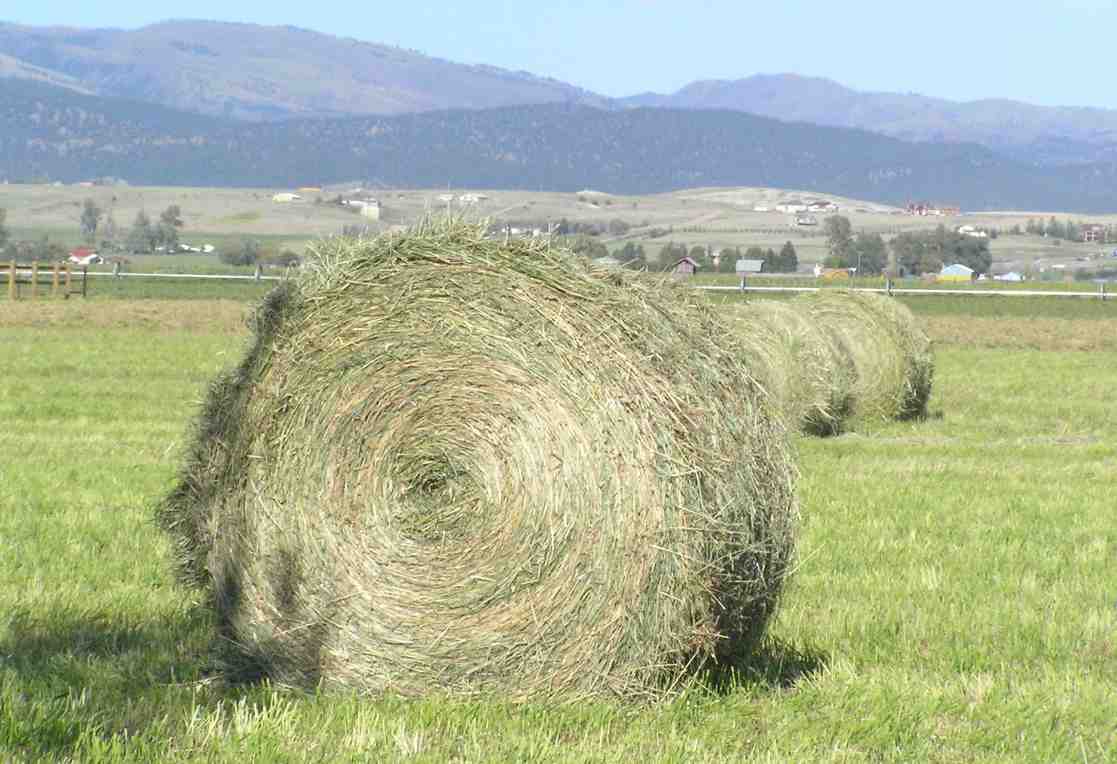Hay is a type of dried grass. It’s like when the sun kisses the green grass, and then people gather it up and let it dry. Hay can be golden or yellow, and it smells like the outdoors.
Farmers use hay to feed animals like cows, horses, and goats. It’s like a tasty meal for them. Imagine being a cow, munching on hay, enjoying the crunchiness. Hay is like a big salad for animals.
Not only is hay good for animals, but it’s also helpful for farmers. They use it to make a cozy bed for animals to sleep on. Picture a barn filled with soft hay, like a fluffy mattress for the animals to rest after a long day of eating and walking around.
People use hay in decorations too. In fall, you might see hay bales arranged in a cute way, creating a rustic and warm atmosphere. It’s like nature’s decoration, bringing a touch of the countryside to our homes.
Did you know that hay has been around for a very long time? Since ancient times, people have been using hay to feed their animals. It’s like a timeless tradition, passed down from generation to generation.
Hay is simple yet versatile. It’s not just dried grass; it’s a symbol of nature’s bounty and a vital resource for farmers and their animals. Next time you see a field of hay, remember, it’s not just grass; it’s a fundamental part of the circle of life on the farm.
Read Also: Economic Benefits and Types of Crop Farming
The Importance of Hay

The importance of hay extends beyond its simple appearance. Hay plays a crucial role in agriculture and animal husbandry.
Firstly, hay is a primary source of nutrition for many farm animals. Farmers rely on hay to feed livestock like cows, horses, and goats, providing them with essential nutrients to stay healthy and productive. Without hay, these animals might not get the balanced diet they need.
Secondly, hay is a valuable resource for farmers in terms of bedding material. The dried grass serves as a comfortable and insulating bedding for animals in barns and shelters. This not only keeps the animals warm but also contributes to their well-being by providing a clean and cozy environment.
Furthermore, hay serves as a crucial component in sustainable farming practices. It allows farmers to store excess forage during times of plenty, providing a reserve of food for animals during seasons when fresh grass is scarce. This strategic use of hay helps farmers manage their resources efficiently and ensures the well-being of their livestock year-round.
Beyond agriculture, hay holds cultural significance. It is often associated with rural life and traditions, symbolizing the connection between humans, animals, and the land. Hay is not just a practical resource; it’s a link to a way of life that has been sustained for generations.
In essence, the importance of hay lies in its multifaceted role as a nutritional source, bedding material, and a key element in sustainable farming practices. It is a humble yet indispensable part of the agricultural ecosystem, contributing to the well-being of both animals and the farmers who care for them.
Uses of Hay
Hay has various uses, serving both practical and aesthetic purposes in different aspects of life.
1. Animal Feed: Hay is primarily used as a feed for farm animals. It provides essential nutrients, fiber, and roughage that animals like cows, horses, and goats need for a balanced diet. Farmers use hay to supplement the diet of their livestock, especially during seasons when fresh pasture is limited.
2. Bedding Material: The dried and fluffy nature of hay makes it an excellent bedding material for animals. Farmers use it to create comfortable and insulating beds for livestock in barns and shelters. This helps maintain the health and well-being of the animals by providing them with a clean and cozy place to rest.
3. Forage Storage: Hay is often harvested and stored as a reserve forage. This is particularly important during seasons when grass growth is slow or nonexistent. Storing hay allows farmers to ensure a stable and consistent food supply for their animals throughout the year.
4. Erosion Control: In landscaping and conservation efforts, hay can be used as a natural erosion control method. It helps prevent soil erosion by providing ground cover and stabilizing the soil, especially on slopes and in areas prone to erosion.
5. Decorative Purposes: Hay is widely used for decorative purposes, especially in rural or seasonal settings. It’s common to see hay bales used in fall decorations, creating a rustic and charming atmosphere in festivals, weddings, or other events.
6. Mulching: Chopped or straw-like hay can be used as mulch in gardens. Mulching helps retain soil moisture, suppress weed growth, and regulate soil temperature. It’s an eco-friendly way to enhance the health of plants and promote optimal growing conditions.
7. Composting: Hay, being organic matter, is an excellent addition to compost piles. It contributes to the creation of nutrient-rich compost, which can be used to improve soil quality and fertility in gardens and agricultural fields.
8. Educational Purposes: Hay is often used in educational settings to teach children about agriculture and farm life. It provides a tangible and hands-on experience for learning about the importance of farming, animal care, and sustainable practices.
However, hay’s uses extend from being a staple in animal nutrition to playing roles in bedding, conservation, decoration, and various agricultural practices. Its versatility makes it a valuable resource in both rural and urban contexts.
Read Also: Growing and Care Guide of Cassava Plant
Non-Alfalfa

Non-Alfalfa is a type of plant that is not Alfalfa. It’s like a different kind of green friend for farms. Just imagine a field, not filled with Alfalfa, but with other plants that are also helpful.
Farmers use Non-Alfalfa to feed their animals, just like they use Alfalfa. It’s like having a variety pack of snacks for cows, horses, and other farm friends. Non-Alfalfa provides important nutrients to keep these animals strong and healthy.
In the barn, Non-Alfalfa can become cozy bedding for animals. It’s like making a soft bed out of nature’s leftovers. Animals get to rest on this fluffy bed after a busy day of munching on their plant snacks.
People who take care of farms know that Non-Alfalfa has its own special qualities. It might not be Alfalfa, but it still plays a big role in the circle of farm life. It’s like being part of a green team, where different plants work together to make sure animals are happy and well-fed.
Sometimes, Non-Alfalfa is also used in gardens. It’s like giving plants a boost with a natural helper. Gardeners know that Non-Alfalfa, with its organic goodness, can be like magic for the soil, making plants grow strong and vibrant.
Non-Alfalfa might not be as famous as Alfalfa, but it has its own charm. It’s a green companion on the farm, quietly doing its part to support animals and plants alike. Next time you see a field of green, remember, not all of it is Alfalfa – some of it is Non-Alfalfa, doing its green magic in a different way.
In the world of farms, Non-Alfalfa is like a friendly neighbor to Alfalfa. It grows alongside, contributing its leafy goodness to the agricultural landscape. Farmers appreciate the diversity that Non-Alfalfa brings, like having a variety of veggies on a plate.
One interesting thing about Non-Alfalfa is its adaptability. It can thrive in different climates and soils, proving itself as a reliable plant companion for farmers around the world. It’s like a green chameleon, adjusting to various conditions to make sure it grows strong and healthy.
Non-Alfalfa, though not as famous, has its own fan club among animals. Cows and horses munch on it with gusto, savoring the taste of this alternative green snack. It’s like a tasty buffet for them, offering a mix of flavors from different plants in the field.
On the farm, Non-Alfalfa contributes not just to animal nutrition but also to the environment. It’s like a green superhero, preventing soil erosion and adding a touch of biodiversity to the landscape. Farmers know that a mix of plants, including Non-Alfalfa, creates a balanced and sustainable ecosystem.
Gardeners, too, have discovered the benefits of Non-Alfalfa. It’s like a secret ingredient for a flourishing garden. When added to the soil, Non-Alfalfa enriches it with nutrients, acting as a natural fertilizer. Plants in the garden, just like farm animals, appreciate the organic goodness that Non-Alfalfa brings to the table.
In the grand symphony of nature, Non-Alfalfa might not be the lead violin, but it certainly plays a valuable note. It’s a green team player, supporting the overall health of the farm and contributing to the beauty of the countryside. So, the next time you stroll through a field of green, take a moment to appreciate the subtle yet significant presence of Non-Alfalfa, working harmoniously with its green companions.
Read Also: Complete Steps in Glass Recycling Guide

